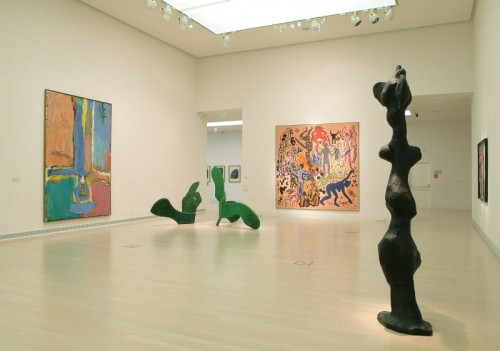The Japanese-born artist learned to play the piano and sing when she was young, and studied philosophy at the university. In well-off families it was a basic expectation to master painting, poetry and calligraphy, which must have helped Ono to pursue a variety of artistic activities.
In the second half of the fifties, she joined the New York art scene, where she got acquainted with John Cage and George Maciunas. It was the time when Fluxus, including happening and assemblage, started in America. Disappointed of modernism and rationalism, post-war intellectuals turned to existentialism, oriental philosophy, primarily Zen Buddhism.
Ono became an active member of the Fluxus circle, an instruction supplied to one of her early performances (Lighting Piece 1955 and 1961, 1962) describes this period well. “Light a match and watch it burn down.” In this piece, she highlights an ordinary activity, confronting the viewer with the act, so that all elements become conscious. Elevating the ordinary into new dimension and developing consciousness are important Zen thoughts. In other performances she engages the audience: in one of her anti-war actions (Cut Piece, 1966), viewers are asked to cut off her clothes to send them to someone they love; or to hammer nails into a picture prepared by the artist (Painting to Hammer a Nail, 1961).
In addition to paintings and performances, she also made experimental films. She refused traditional and objectified art, focusing all her works on a thought, conception. She creates works that concentrate the viewers’, contributors’ attention on the thought reflected by the artwork.
In addition to Fluxus, conceptualist thinking is also characteristic of Ono. Her installation Play It with Trust is a typical conceptual work. The original piece from 1966 was exhibited under the title The White Chess Set in London, but in 1991 and 1997 a New York gallery furnished the entire exhibition hall with chess tables and chairs, where Ono herself joined the parties. The unique set consists of white pieces and squares only. Thus, the artist has eliminated the essence of the game: competition and opposition. Having no opponent, the struggle loses its point. Although the shapes of the pieces are maintained, and the board is also divided into squares, the game cannot be followed after a few moves, as the chess pieces get all mixed up. While the participants lose the thread, instead of opposing positions they find themselves in a new, more emphatic situation. They realize, that the set target has lost its meaning, opposition ceases completely, the state of peace emerges. According to the artist’s intention the game can carry on, if the participants are able to set new rules. The work can also be interpreted as one of Ono’s anti-war actions: the aim is not to play the game, but for the thought wanting to change the world to reach the audience. Along with political actuality, another consequently repeated aspiration of Ono also appears, namely that the participants and the viewers identify their position.
: Play It by Trust (1986-87)
Gift of Samuel Havadtoy, 1993
Keywords


